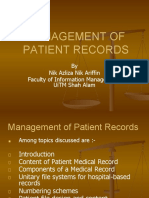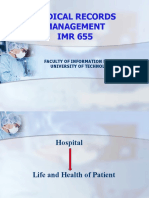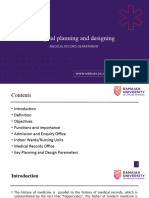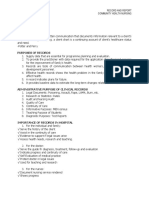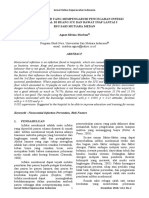0% found this document useful (0 votes)
28 views15 pagesGRM Notes
This document outlines the procedures for managing accident and emergency records, including types of records to be maintained, appointment scheduling, patient disposal methods, and legal requirements for record retention. It also discusses the organization and management of waiting lists for inpatient and day case treatments, detailing the functions, types, and filing methods of waiting lists. Additionally, the document addresses the legal aspects of health records, emphasizing confidentiality, ownership, security, and the conditions under which patient information may be disclosed.
Uploaded by
rayscroonerCopyright
© © All Rights Reserved
We take content rights seriously. If you suspect this is your content, claim it here.
Available Formats
Download as DOCX, PDF, TXT or read online on Scribd
0% found this document useful (0 votes)
28 views15 pagesGRM Notes
This document outlines the procedures for managing accident and emergency records, including types of records to be maintained, appointment scheduling, patient disposal methods, and legal requirements for record retention. It also discusses the organization and management of waiting lists for inpatient and day case treatments, detailing the functions, types, and filing methods of waiting lists. Additionally, the document addresses the legal aspects of health records, emphasizing confidentiality, ownership, security, and the conditions under which patient information may be disclosed.
Uploaded by
rayscroonerCopyright
© © All Rights Reserved
We take content rights seriously. If you suspect this is your content, claim it here.
Available Formats
Download as DOCX, PDF, TXT or read online on Scribd
/ 15













